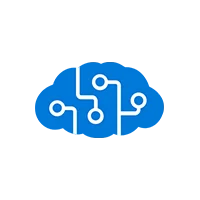In today’s increasingly digital world, data has become one of the most valuable assets for individuals and organizations alike. However, with the growing dependence on data comes a heightened need for data security. In this blog, we will explore what data security actually is and why it is so important to secure customer’s data. Also, we will learn about some proven steps opted by IT companies to enhance data security.
What is data security?
Data security is like having a strong lock and key system to keep your valuable information safe from unauthorized access, ensuring that your data remains confidential, unchanged, and available when needed. It’s like protecting a secret diary with a combination of digital fortresses, secret codes, and strict access rules while regularly making copies and teaching trusted individuals how to handle it responsibly.
You all will agree to this, we use several applications installed on our mobile devices from real estate apps to finance apps, and all with a lot of personal data about us and our family members. All of this data is stored secretly in the cloud. Cloud storage has its benefits and drawbacks. This data can be at stake if the app is not properly encrypted.
Why Data Security Is So Important?
The importance of data security cannot be overstated. Here are some compelling statistics that underscore its critical significance:
-
Escalating Cybercrime Rates:
Cyberattacks are on the rise, with hackers targeting businesses of all sizes. According to Cybersecurity Ventures, global cybercrime costs are expected to reach $6 trillion annually by 2021, up from $3 trillion in 2015.
-
Data Breach Consequences:
Data breaches have severe consequences. In a study by IBM, the average cost of a data breach in 2020 was $3.86 million. Moreover, 76% of consumers would switch to a competitor if their data was compromised.
Data protection regulations, like GDPR and CCPA, have become more stringent. Non-compliance can result in substantial fines. GDPR, for instance, allows for fines of up to €20 million or 4% of a company’s global annual revenue, whichever is higher.
-
Intellectual Property Theft:
Organizations invest heavily in research and development. Data security protects intellectual property from theft. In a survey by PwC, 34% of respondents reported economic crimes involving the theft of trade secrets or proprietary information.
Insider threats are a significant concern. The 2020 Verizon Data Breach Investigations Report found that 30% of data breaches involved internal actors. Effective data security mitigates this risk.
Now, let’s explore some proven steps that IT companies take to enhance data security:
Proven Steps Taken by IT Companies to Improve Data Security
Encryption is the process of converting data into an unreadable format (cipher) using encryption algorithms and encryption keys. This ensures that even if unauthorized users gain access to the data, they cannot decipher or make sense of it without the proper decryption keys. Here’s more about encryption:
- Data Encryption at Rest: Data encryption involves storing data on devices such as hard drives, databases, and backup tapes. Full-disk encryption, database encryption, and file-level encryption are common methods used to protect data at rest.
- Data Encryption in Transit: Data transmitted over networks or the internet is vulnerable to interception. Secure protocols like HTTPS, SSL/TLS, and VPNs are used to encrypt data in transit, making it unreadable to eavesdroppers.
-
Strong Authentication:
Authentication is the process of verifying the identity of users or systems trying to access data. Strong authentication ensures that only authorized individuals or entities gain access. Key aspects of strong authentication include:
- Multi-Factor Authentication (MFA): MFA requires users to provide multiple forms of verification, such as a password and a one-time code sent to their mobile device. This adds an extra layer of security beyond just a password.
- Biometric Authentication: Biometric data, like fingerprint or facial recognition, is used for authentication. It is difficult for attackers to replicate biometric traits, making it a secure method.
-
Access Controls:
Access controls are mechanisms that define and enforce who can access specific data and what actions they can perform once they gain access. They help limit the exposure of sensitive information. Access control measures include:
- Role-Based Access Control (RBAC): Users are assigned roles with predefined access rights. For example, employees in the finance department may have access to financial data, while those in HR do not.
- Access Permission Policies: Access policies dictate who can read, write, modify, or delete data. These policies are applied to files, folders, and databases.
-
Regular Security Audits:
Regular security audits and monitoring of network and system activities are essential for identifying vulnerabilities, unusual patterns, and potential threats. Here’s how this process works:
- Security Information and Event Management (SIEM): SIEM tools collect and analyze data from various sources, allowing organizations to detect and respond to security incidents in real time.
- Penetration Testing: Ethical hackers conduct penetration tests to identify weaknesses in a system’s security by attempting to exploit them. Organizations use the results to strengthen their security measures.
Employees are often the weakest link in data security. IT companies invest in employee training and awareness programs to educate their workforce on security best practices:
- Phishing Awareness: Employees are taught to recognize phishing emails and other social engineering tactics used by cybercriminals to gain unauthorized access.
- Data Handling Policies: Employees learn how to handle sensitive data, ensuring it is not inadvertently exposed or mishandled.
-
Data Backup and Recovery:
Regular data backups and offsite storage are critical for ensuring data availability and recovery in case of data loss or cyberattacks:
- Automated Backups: Companies set up automated backup processes to create regular, consistent copies of data.
- Offsite Storage: Backup copies are stored offsite to protect against physical disasters that could affect on-premises data.
-
Patch Management:
Keeping software and systems up-to-date with security patches is crucial to protect against known vulnerabilities:
- Vulnerability Assessment: Regular scanning and assessment of systems for vulnerabilities help identify areas that need patching.
- Patch Deployment: IT teams ensure that security patches and updates are applied promptly to eliminate known weaknesses.
Conclusion
Data security is paramount in an era where data is the lifeblood of businesses and a prime target for cybercriminals. The statistics and steps discussed in this blog underscore the critical importance of data security. IT companies must remain vigilant, continuously adapt their security measures, and invest in technologies and practices that protect sensitive data from evolving threats.
The post Is Data Security Important? How companies are achieving it? appeared first on .
Tags:
- Database security
- data encryption
- data loss prevention
- data security
- database encryption
- database security
- importance of data security
- protecting digital data

 .NET MAUI Development
.NET MAUI Development
 Xamarin Application Development
Xamarin Application Development
 React Native App Development
React Native App Development
 iOS Application Development
iOS Application Development
 Android Application Development
Android Application Development
 Android Wear App Development
Android Wear App Development
 Ionic Development
Ionic Development
 iBeacon Application Development
iBeacon Application Development
 Universal Windows Platform (UWP)
Universal Windows Platform (UWP)
 Kotlin Application Development
Kotlin Application Development
 Swift Application Development
Swift Application Development
 Flutter Application Development
Flutter Application Development
 PWA Application Development
PWA Application Development
 .NET Application Development
.NET Application Development
 .NET Nuke Development
.NET Nuke Development
 Microsoft Dynamics CRM
Microsoft Dynamics CRM
 Microsoft Small Business Solution
Microsoft Small Business Solution
 VB .NET Development
VB .NET Development
 C# Development
C# Development
 Sharepoint Migration
Sharepoint Migration
 Sharepoint Development
Sharepoint Development
 ASP.NET Core Development
ASP.NET Core Development
 ASP.NET Development
ASP.NET Development
 ASP.NET MVC Development
ASP.NET MVC Development
 Kentico CMS
Kentico CMS
 Umbraco CMS
Umbraco CMS
 AJAX Development
AJAX Development
 Agile Development
Agile Development
 Microsoft Bot
Microsoft Bot
 Microsoft Blazor
Microsoft Blazor
 Microsoft Azure Cognitive
Microsoft Azure Cognitive

 Mean Stack Development
Mean Stack Development
 Vue JS Development
Vue JS Development
 Javascript Development
Javascript Development
 Angular JS Development
Angular JS Development
 Next JS development
Next JS development
 Java Development
Java Development
 Python Development
Python Development
 Django Development
Django Development
 Cherrypy Development
Cherrypy Development
 NodeJS Development
NodeJS Development
 Laravel Development
Laravel Development
 CodeIgniter Development
CodeIgniter Development
 Zend Development
Zend Development
 Ruby on Rails Development
Ruby on Rails Development
 CakePHP Development
CakePHP Development
 PHP Website Development
PHP Website Development
 Symfony Development
Symfony Development
 Drupal Development
Drupal Development
 Joomla Development
Joomla Development
 Wordpress Development
Wordpress Development
 Offshore Software Development
Offshore Software Development
 Custom Application Development
Custom Application Development
 Full Stack Development
Full Stack Development
 AI & Machine Learning
AI & Machine Learning
 Custom CRM Solutions
Custom CRM Solutions
 Flask Software Development
Flask Software Development
 Electron JS Development
Electron JS Development
 ChatGPT Development
ChatGPT Development
 Magento Development
Magento Development
 Magento 2.0 Development
Magento 2.0 Development
 Magento Enterprise
Magento Enterprise
 Shopping Cart Development
Shopping Cart Development
 Prestashop Development
Prestashop Development
 Shopify Development
Shopify Development
 Open Cart Development
Open Cart Development
 WooCommerce Development
WooCommerce Development
 BigCommerce Development
BigCommerce Development
 NopCommerce Development
NopCommerce Development
 Virto Commerce Development
Virto Commerce Development
 AspDotNetStorefront Development
AspDotNetStorefront Development
 RaspBerry Pi
RaspBerry Pi
 Firmware Software Development
Firmware Software Development
 ESP 32 Software Development
ESP 32 Software Development
 Embedded Development
Embedded Development
 Internet of Things
Internet of Things
 Nordic Development
Nordic Development
 HTML 5
HTML 5
 UI/UX Design
UI/UX Design
 Graphic Design
Graphic Design
 Adobe Photoshop
Adobe Photoshop
 XML Application Development
XML Application Development
 Cloud Computing Solutions
Cloud Computing Solutions
 Azure Cloud App Development
Azure Cloud App Development
 AWS Development
AWS Development
 Google Cloud Development
Google Cloud Development
 SQL Programming Development
SQL Programming Development
 MySQL Development
MySQL Development
 MongoDB Development
MongoDB Development
 Big Data
Big Data
 Robotic Process Automation
Robotic Process Automation
 Social Media Marketing
Social Media Marketing
 Search Engine Optimization
Search Engine Optimization
 QA Testing
QA Testing
 Software Testing
Software Testing
 Software Security
Software Security
 Maintenance And Support
Maintenance And Support
 I.T. Consulting Services
I.T. Consulting Services
 Business Intelligence
Business Intelligence
 YII Development
YII Development
 Data Analysis
Data Analysis
 Alexa Skills Development
Alexa Skills Development
 On Demand App for Mobile repairing services
On Demand App for Mobile repairing services
 On Demand App for Car Service Booking
On Demand App for Car Service Booking
 On Demand App for Cleaning Services
On Demand App for Cleaning Services
 On Demand App for Pharmacy
On Demand App for Pharmacy
 On Demand Dedicated Developers
On Demand Dedicated Developers






Leave a Reply